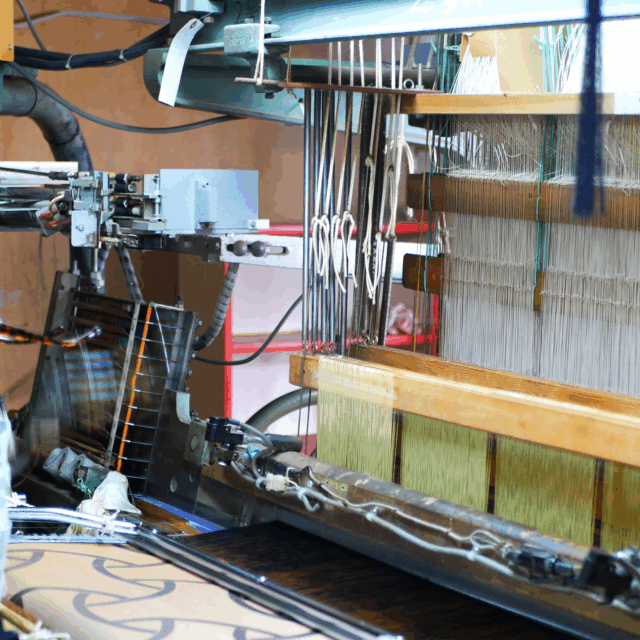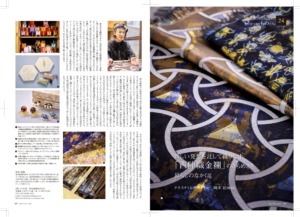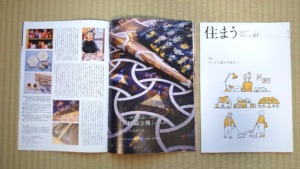
Nurtured by the Sound of Weaving|Okamoto Orimono’s Cooperative Workshop in Kyōtango – Nunohira


Among the Nishijin textiles known around the world as high-end fabrics, Okamoto Orimono has been producing the glittering silk fabric Kinran for more than 100 years. Ema, from Hokkaido, jumped into the industry when she married Keiji Okamoto, now the fourth president of the company. The two met in Tokyo, where they were both studying at different art universities, and chose to join Keiji’s family business out of a shared desire to make a living from craftsmanship. Ema says: ‘My mother’s business is textile-related and I myself studied fibre arts at university, so I was also interested in Nishijin textiles. I had no hesitation in marrying into a traditional Kyoto family,’ she recalls with a broad smile.
Since its foundation, Okamoto Orimono has specialised mainly in textiles used in shrines and temples to represent the Pure Land of Paradise with their glittering gold and silver and vivid colours. Keiji-san immediately began training as a hand weaver, and has since earned the title of traditional craftsman, following in the footsteps of his father and uncle, who are still active on the loom. Ema-san, on the other hand, has gradually expanded her work to include inspecting finished products (called ‘kensen’), producing ‘pattern design drawings’, which are design drawings for textiles, and public relations, while also raising her children and caring for her family. The more she got involved, the more she became fascinated by the charm of Okamoto Orimono’s unique gold brocade. In the traditional business of delivering brocade to shrines and temples, it is a pity that no matter how good the weaving is, we can’t use our company’s name. Textile design is Ema’s speciality. It was fun to create designs of events that struck a chord with me. As she uploaded the completed designs to the SNS, she gradually began to receive feedback. The next challenge was how to turn them into products. Ema says, ‘In the beginning, we didn’t understand the distribution system and had to go through a trial-and-error process while asking for help from various people. With her natural vitality and footwork, she connects with people and continues to proactively take on challenges that interest her. From there, new developments such as product development through cross-genre collaborations and visits to overseas markets are being created one after another.
On the other hand, the ageing of skilled craftspeople in the field, where the division of labour has long maintained a high level of skill, is putting the survival of some processes and tools in jeopardy. Ema’s face tightens as she says: ‘That is where we have the greatest sense of crisis, because if things continue as they are, there will be no more time left. In order to ensure that the technology does not die out, the craftspeople themselves must produce and market the traditional crafts from now on. Not only in Nishijin, but also in other traditional crafts in Kyoto, new products and sales channels should be created by teaming up and cooperating with each other across the entire industry. Creating new demand in this way and building a system to share profits is one path to a better future for craftsmanship. Ema and her team’s beliefs powerfully expand the possibilities of Nishijin and traditional crafts.

We would like to thank Planning House West Inc. for their kind coverage.
The opening feature is ‘Living with Pets’.